JF Ptak Science Books LLC Post 367
The tanning industry was large and important in the United States, and stayed that way for many years, until the last few decades, anyway, when the work got farmed out to other countries and when leather was replaced by other cheaper and more toxic material.
This pamphlet--The Story of Leather, the Ohio Leather Company, and printed in 1935-- is an introduction to the tanning business, and takes the reader on a tour of the plant. Unlike many pamphlets that I have here on this variety, this one doesn't take the camera away to wait for the workers to change into work clothing that they would never in a million years wear on the job. The camera stays, the workers--all men--walk in front of the shutter, and the image is captured forever--or at least sort-of forever, as they are now for the first time (like the great majority of the images on this blog) offered to any/everyone on the internet.
The amazing thing for me is the high level, the high percentage, of unusual, intellectually-clamorous names that are given to the divisions of labor in the factory.
The Crust Room (!), Fat Liquor, assistant tackers, hair men, stackers, seasons, trip drivers, rolling jacks, nappers, grain buffers--all relate to something having to do with pulling, treating, stretching, and such to hides, or skin. As a matter this happened to a (claimed) 879,000,000 pounds of hide in the U.S. (That's almost a billion pounds of skin, which means, I suppose, that it must be coming from at least 80,000,000 cows and sheep. A year.) Soaking tubs, unhairing machines (?!), scudding machines and lime paddles, chrome rooms, tanning drums, pickle paddles, fleshing machines; all telling an unpretty story. The pictures tell the rest of the story--most of the men look hot, wet, a little dirty and befouled, with many of them working in puddles; I would've expected that these men would have nice leather aprons to protect them from some of the dangerous machines and chemicals, but I don't see any at all.
This was hard and dirty, stinking work. It was performed by peoples' grandfathers, providing food for the table and money for an education for their children.


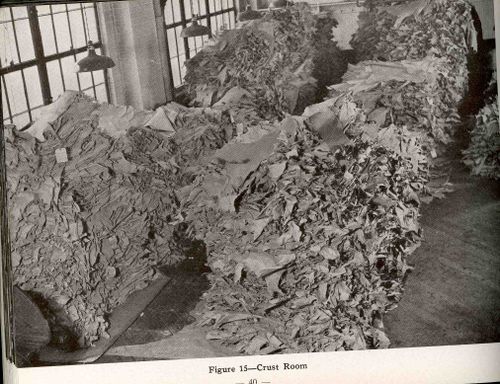
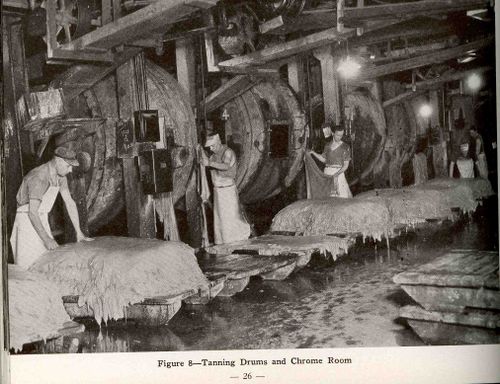
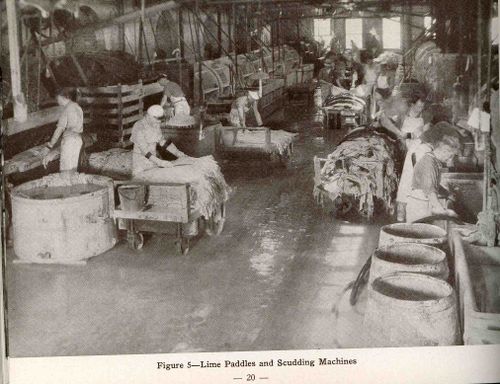
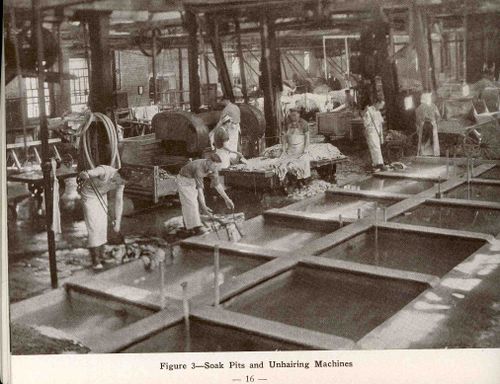
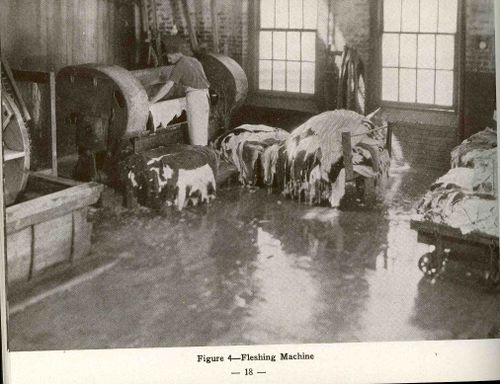

Comments